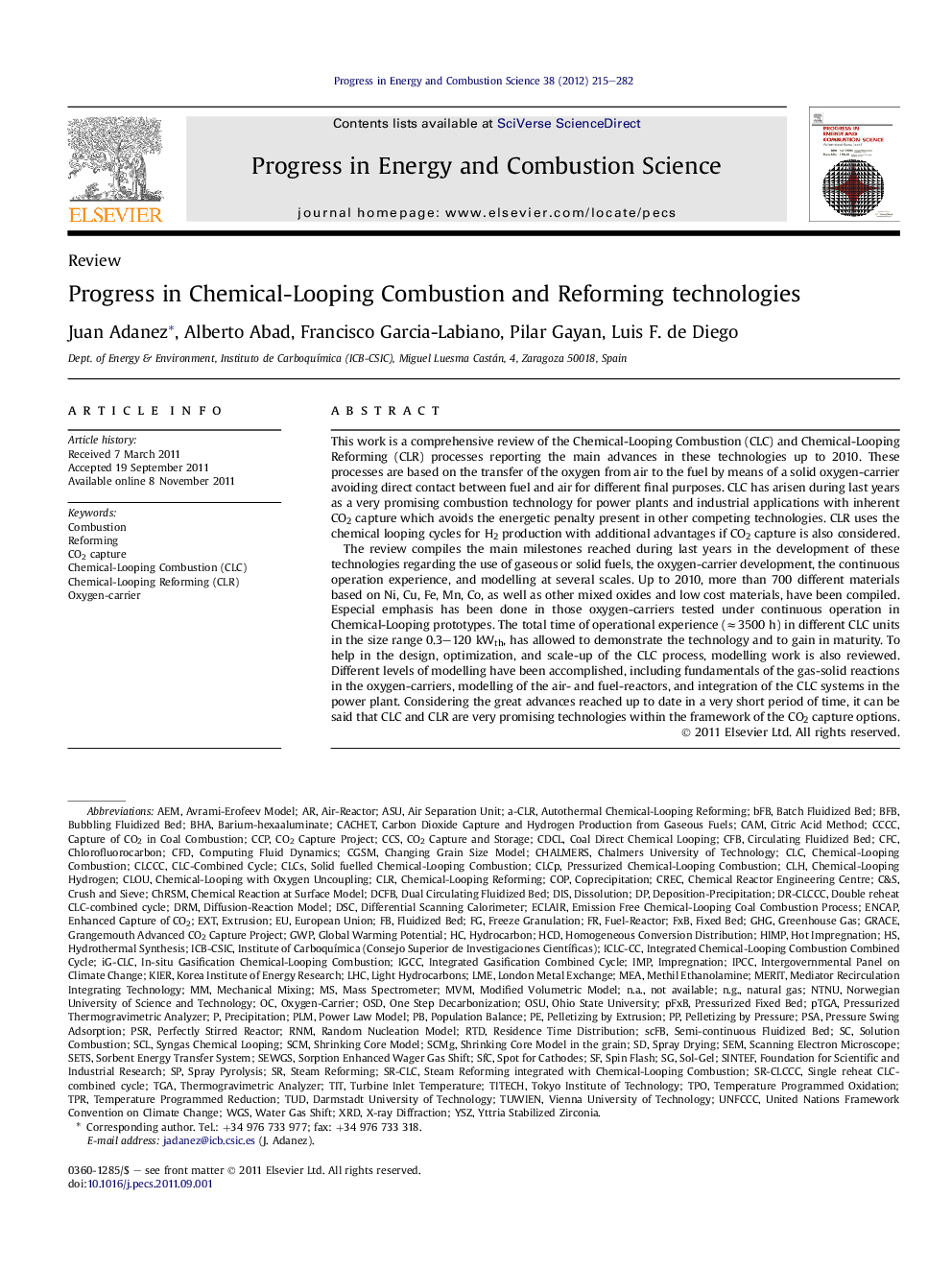| Article ID | Journal | Published Year | Pages | File Type |
|---|---|---|---|---|
| 241709 | Progress in Energy and Combustion Science | 2012 | 68 Pages |
This work is a comprehensive review of the Chemical-Looping Combustion (CLC) and Chemical-Looping Reforming (CLR) processes reporting the main advances in these technologies up to 2010. These processes are based on the transfer of the oxygen from air to the fuel by means of a solid oxygen-carrier avoiding direct contact between fuel and air for different final purposes. CLC has arisen during last years as a very promising combustion technology for power plants and industrial applications with inherent CO2 capture which avoids the energetic penalty present in other competing technologies. CLR uses the chemical looping cycles for H2 production with additional advantages if CO2 capture is also considered.The review compiles the main milestones reached during last years in the development of these technologies regarding the use of gaseous or solid fuels, the oxygen-carrier development, the continuous operation experience, and modelling at several scales. Up to 2010, more than 700 different materials based on Ni, Cu, Fe, Mn, Co, as well as other mixed oxides and low cost materials, have been compiled. Especial emphasis has been done in those oxygen-carriers tested under continuous operation in Chemical-Looping prototypes. The total time of operational experience (≈3500 h) in different CLC units in the size range 0.3–120 kWth, has allowed to demonstrate the technology and to gain in maturity. To help in the design, optimization, and scale-up of the CLC process, modelling work is also reviewed. Different levels of modelling have been accomplished, including fundamentals of the gas-solid reactions in the oxygen-carriers, modelling of the air- and fuel-reactors, and integration of the CLC systems in the power plant. Considering the great advances reached up to date in a very short period of time, it can be said that CLC and CLR are very promising technologies within the framework of the CO2 capture options.
